everything i read in june 2025
5 books about design, grief, spirituality and history ✦ and recent films from China, Taiwan and Vietnam
It’s a relief to recover one’s joie de vivre—which, for me, means reading regularly again, with total absorption and a profound feeling of pleasure. Despite the oppressively high temperatures in London, I managed to read at home (blinds down during the day, windows open at night); on the bus (sweating profusely and inelegantly); and in the cool, dry hours of the evening, when the heat became more placid, diffuse, serene.

Below, brief reviews of:
1 nonfiction book about this history of design, which I reviewed for The Atlantic
4 novels about grief, spirituality, and the lingering disturbances of history
1 poetry book by a children’s book author and playwright
6 films about Chinese industrialization, Taiwanese gay and lesbian couples, Vietnamese death rituals, and more
And one ice cream review, for those living in London or passing through: Gelupo’s non-dairy pistachio gelato, which I’ve had three times in the past week.1 (Spending money on iced drinks and desserts: an unrivalled way to beat the heat.)
Books

Nonfiction
I read Maggie Gram’s The Invention of Design: A Twentieth-Century History, an excellent social and cultural history of the discipline, and wrote about how the book reveals the perils of design and “design thinking” for The Atlantic. Here’s how my article begins:
The more I write, the more strongly I feel that getting the introductory paragraphs right is everything in a piece like this. There are thousands of articles published each day that you could read; why would you deign to read mine? And why would you want to read some person write about a book that you might never read? Especially if you aren’t already interested in twentieth-century design history?
Because I felt that Gram’s book was exceptionally good, I wanted to write an intro that convinced people to care about this article, this book, and these ideas. I’m really happy with where it landed; it feels funny and memorable and conveys the problem—and the promise—of design.2
I wrote about how to begin articles (and what I learned from writers like Janet Malcolm and Charlotte Shane) in—
Part of why I liked Gram’s book—and why it was so deeply enjoyable to write this article—is that it resonated deeply with my own experiences. I grew up in Silicon Valley, went to Carnegie Mellon (one of the great design schools of America), and then spent many years stumbling around with a great deal of naïve earnestness and ignorance, trying to figure out what doing good and changing the world actually meant. The question of what design can and can’t do is central to my life, and I loved how carefully Gram weighed the question!
Novels
A good novel by a great writer
Longtime readers will know that I’m a huge admirer of Jonathan Buckley, whose Tell was one of the best novels I read in 2024. What is it about? Wealth, art, gossip, class; the lasting rewards of love and marriage; the enduring injuries of childhood. But what makes the novel great is the form: the story unfolds through a series of interview transcripts, where a cheerfully voluble, gossipy gardener is interviewed about her billionaire employer. It’s as imaginative and artistically daring as Nicholson Baker’s Mezzanine and Catherine Lacey’s Biography of X.
His latest novel, One Boat, also uses a strong formal concept to anchor the story. After her mother’s death, a solitary, introspective lawyer named Teresa visits a small Greek island and develops fleeting relationships with the people there. Years later, she returns again after her father’s death. Her preternaturally handsome former fling is now married; a brooding mechanic she befriended is now a part-time poet.
Buckley does something very technically impressive in the novel—he shifts the narrative back and forth between the lawyer’s first and second visits. The experience of reading it is appropriately unsteady—whenever Teresa meets a former acquaintance, her previous memories of them surge forward, and we slowly piece together a more coherent narrative: who she was in the past (and what they spoke about in the past), and what she is like today.
It’s a technique that beautifully expresses the dislocation of grief and the overlapping nature of memory. And it helps, too, that Buckley can pull off the most extraordinary descriptions of the scenery—and the most extraordinary descriptions of how people choose to live. Here, for example, is how Teresa chose to become a lawyer (instead of becoming an artist or writer):
Inevitably I followed the straight path, obediently, law-abidingly. For me, the decision had involved self-questioning and self-doubt. Everyone else, looking on, saw the working-out of predestination, like watching from above as the young woman made her way through the twists and turns of the labyrinth’s single corridor. We feel that we are deliberating between equal possibilities, while people wait for us to make the choice they know we will make.
I would say that One Boat is quite good, but not as compulsively, absorbingly brilliant as Tell. (Perhaps that has to do with the subject for each novel? It’s more fun to read about wealthy people buying art and having affairs; less so the inner workings of grief.) Still! I would recommend Buckley’s work unreservedly to people who want to write fiction—he is really exceptional at making formal experimentation actually work, so that it feels coherent and essential to the story instead of an arbitrary stylistic flourish.
Take every literary cliché and make it good
In early June I spent nearly two weeks at home, profoundly sick, and one of the few novels I could tolerate was Nicolette Polek’s Bitter Water Opera. In fact, I loved it and came away with an enormous respect for Polek’s ability to deploy all the tropes of contemporary literary fiction—
Romantically/sexually messy female protagonist
Said protagonist’s existential despair narrated through a sometimes detached, dissociated voice
Conspicuous references to highbrow film/art
Earnest stabs at finding greater spiritual meaning in life, but in an ambient, nondenominational way
—in a novel that actually felt zippy, animated by a strong propulsive voice that made up for the novel being a little loose and plotless. (Another trope!)
Bitter Water Opera is about a film professor who becomes obsessed with Marta Becket, a choreographer, dancer and painter who spent decades performing at the Amargosa Opera House and Hotel—first to an empty room, and then to an audience intrigued by her solitary, unyielding devotion to dance. Marta Becket is a real person, but it’s unclear whether the novel’s opening scene—where a Becket-like apparition comes to live with the protagonist—is “real.” (From the novel: “She was wearing shiny blue underwear, and looked much younger than I, even though she died when she was ninety-two years old.”) But what does real even mean in a novel like this? What we do know is that the protagonist tries to make Becket feel at home:
I purchased $250 worth of groceries: duck eggs, pickled cactus, black garlic, and other impractical, elysian foods. I bought plumeria lotion and slippers with stitched dragons on them. The groceries made the car smell like custard, and the sky turned a dark purple as I gripped the wheel.3
Later on, the protagonist—after quietly sabotaging and then running away from her relationship—goes to visit the Amargosa motel. The trip has certain mystic and cataclysmic overtones to it, and the ending of the novel feels—inconclusive, technically, but also very settled and complete on an emotional level.
“Read the best writers from all different periods…You already belong to your time”
My hero and idol, Lydia Davis, insisted in “Thirty Recommendations for Good Writing Habits” that writers should read a broad range of historical and contemporary novels. Of the latter, she cautioned: “Keep your reading of contemporaries in proportion…You already belong to your time.”

I belatedly remembered Davis’s advice in the last week of June, when I finished off W.G. Sebald’s The Rings of Saturn. My first Sebald, and published in 1995—so not very historical, all things considered. (I’m trying!) The novel is about a man walking through Suffolk, and as he passes through the landscape, he begins to tell us, the reader, about different events of the past. He ruminates on 19th century Chinese court intrigues, one of Chateaubriand’s early love interests, and more—with somber photographs placed throughout the text.
I liked The Rings of Saturn; I admired it; I respected Sebald’s, you know, project with the whole novel. But I was not enamoured with it. Sebald’s style has a great deal of quiet dignity—but because it was so affectless and removed, I myself felt very little affective passion for it!
Writing this newsletter reminded me that, a few years ago, Lauren Oyler had published an essay in Harper’s, “Desperately Seeking Sebald.” Now that I could read and actually appreciate it, I was relieved to find a characteristically funny essay about Oyler’s disappointment with him:
His fictions are stunningly consistent…His major themes include the Third Reich and the Holocaust, architecture and ruins, exile, the destruction of nature, the lives of writers and other intellectuals (which he often manipulates to suit his purposes), memory, and time. His recurring images include trees, veils, skulls, fire, ice, mist, ash, dust, silk, pigeons, a probably but not definitely dead body, and, twice, copulation witnessed accidentally, presaging horror. Someone is always having a very meaningful dream, often “paradoxically much clearer” than memory, which is usually being repressed to moving effect. There are also, famously, the photos, grainy black-and-white images that he often manipulated to look older and more authentic but that typically don’t depict what the surrounding text suggests they do. The assessment, argued through the elliptical structure of his fiction, is that life is a set of interconnected, pointless, and depressing tangents that seem as if they might lead somewhere but don’t, or else lead inevitably to the one place you want desperately to avoid because from there you have nowhere else to go.
I like this. What I don’t like is actually reading the books, which have something posturing and needy about them, no matter how many memorable lines and images they turn up.
As I am characteristically cautious with my opinions (effusive with affection, reserved with criticism), I’ll just say that I did like reading The Rings of Saturn, but I did not exit the novel with a tremendous, feverish hunger to read the rest of his works. I will sedately continue through the literary canon…and someday, perhaps, I’ll read Austerlitz.
A twentieth-century Booker Prize–winning writer
But here’s a novel I devoured and loved and may or may not have cried over: Anita Brookner’s The Latecomers. Back in April, Roman Muradov—an artist and illustrator and former colleague (we bonded over Bolaño during a company offsite)—said offhandedly that Brookner was a great novelist, perhaps even his favorite novelist. The next day, a friend and I stopped by an Oxfam and I found an elegantly aged copy of Brookner’s The Latecomers. Synchronicity? (Or an expected outcome, since Brookner—an art historian and novelist who won the Booker Prize in 1984—was born in London and died in London?)
The Latecomers, which was published a few years after Brookner won the Booker, is about two young boys, Hartmann and Fibich, whose parents placed them on the Kindertransport so that they could escape Nazi Germany and begin new lives in England. The two boys cope with this loss in profoundly different ways: Hartmann grows up to be cheerfully resolute and intransigently optimistic; Fibich is cautious, nervous, and psychologically frail. But the two are close friends for over 50 years, and the novel follows Hartmann and his wife Yvette, and Fibich and his wife Christine, as they become parents and confront (or elide) their pasts. What makes this novel extraordinary is just the sheer vigor and power of Brookner’s character descriptions—it reminds me of the great 19th century social novels, but in a more intimate setting.
Poetry
In my recent newsletter about Proust, I briefly mentioned a poem by the children’s book author and theatrical poet Ruth Krauss.
The poem is from Krauss’s There’s a little ambiguity over there among the bluebells, which my friend Nile (mentioned in my other recent newsletter about Annie Ernaux—sadly I am not beating the Francophile allegations!) acquired for me.
The poems in the book are so irrepressibly charming! That’s the only word for them—charming. Krauss described these as “theater poems” or “poem plays,” and many are written to look like off-kilter stage directions and declamations. The title poem, for example, begins like this:
ONEWhat a poet wants is a lake in the middle
of his sentence
(a lake appears)TWO
yes and a valid pumpkin
(a pumpkin appears)
THREE
and you should slice up language like a
meatcutter abba dabba dabba dabba yack
(sliced up language appears)
FOUR
It’s fine we have inhibitions
otherwise we’d all be dead
(all drop dead)
Another brief poem, “A Beautiful Day,” is just two lines long:
GIRL
What a beautiful day!
THE SUN
falls down onto the stage
I recently learned about a new therapeutic term: “inner child work.” I’m still not sure what it is, but surely reading Ruth Krauss’s poems should be included.
Films
A cinematic collage of Chinese contemporary life ✦
I saw the celebrated Chinese director Jia Zhangke’s Caught by the Tides (2024) at the ICA in London. The first third of the film is a cinematic collage of footage that Jia shot for other projects, starting in 2001. A lot of the footage feels very social: women laughing and singing together; men seated for a group project and gazing steadily and sometimes warmly at the camera. Other footage pulls in the sweeping industrial and infrastructural changes that have happened over the past few decades in China: new cities, transit networks, buildings—and the necessary dislocations that result.
As Caught by the Tides progresses, a few scenes, featuring a young woman named Qiao Qiao, gradually emerge as the central plot. The second half of the film is largely about Qiao Qiao’s tumultuous relationship with her manager and lover Guao Bin, who departs the city of Datong one day with vague promises to stay in touch.
He doesn’t, so Qiao Qiao goes on a solitary journey through central China—where she observes all the people displaced by a new hydroelectric dam—to find Bin.
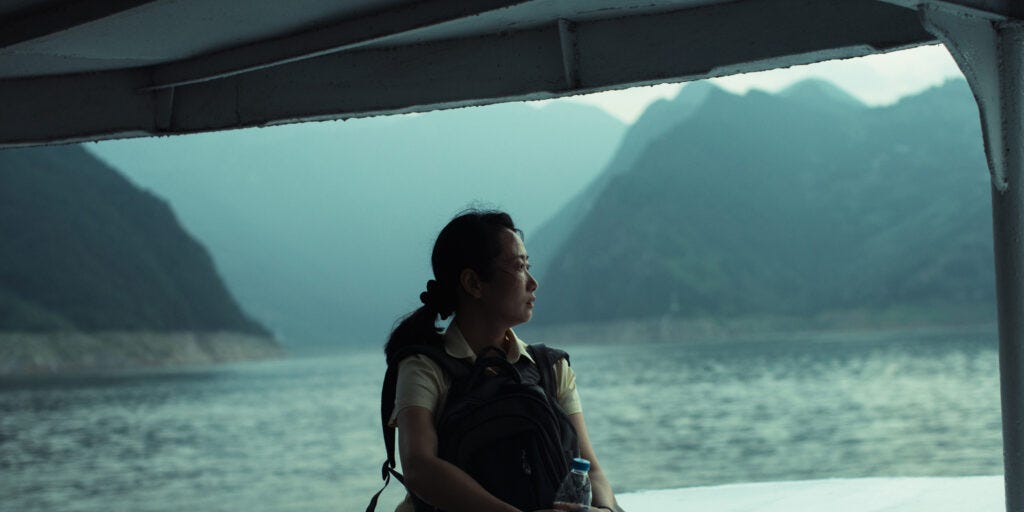
I was very moved by this film and loved how Qiao Qiao’s story is set against the sweeping backdrop of Chinese development. The film ends in post-COVID China—nearly present day—and actually made me tear up towards the end.
If you’re interested in other stories about romantic difficulties, I reviewed several novels & films about this in—
I celebrated Pride month too early ✦
I also watched some other films this spring—which I’ve neglected to write about until now!—which were screened as part of the Queer East festival of east and southeast Asian films. Some brief, brief (I know I’m incapable of brevity, but I’ll try!) reviews of these:
What to wear (as a gay or lesbian Taiwanese couple) ✦
At the very end of April, I went to a double screening of Jo-Fei Chen’s Where Is My Love (1996) and Incidental Journey (2002) at the Barbican in London.
Where Is My Love is about a closeted gay writer (left) who’s afraid to submit his latest short story to a literary prize, since the story will reveal to everyone that he’s gay. In the three days before the deadline, he begins a slow-burn fling with an acquaintance who was fired from his TV job for being openly gay. You can imagine what happens. The openly gay leather-jacket-wearing guy pushes the closeted gay turtleneck-and-jumper guy to accept himself! And his talent! They kiss! They fight! They may or may not make up—it’s up to you to see the film and find out.
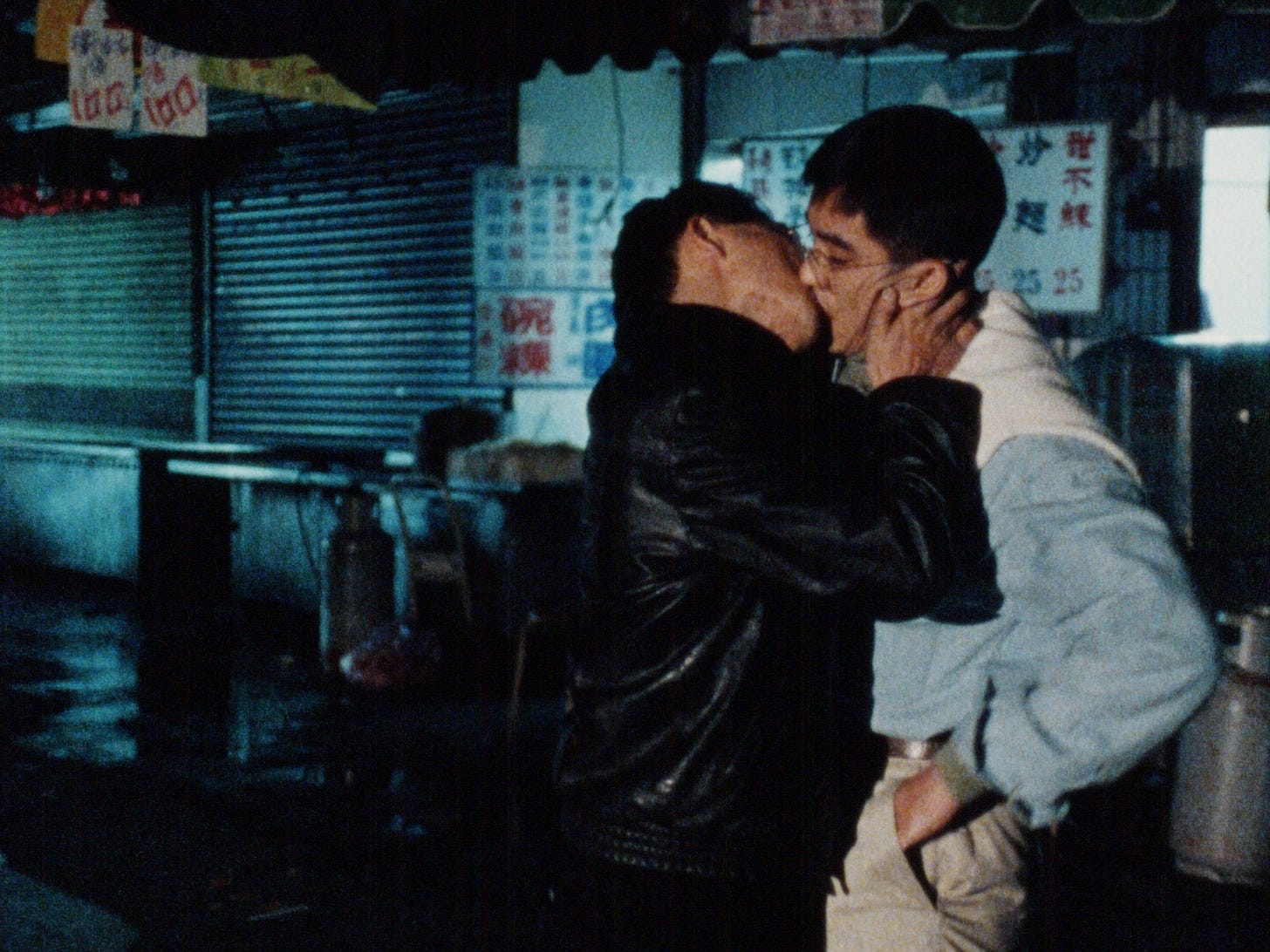
Incidental Journey was just phenomenal fashion inspiration: a 7115 by Szeki soft butch meets a Paloma Wool/Maryam Nassir Zadeh femme in the mountains. The latter is recovering from a painful breakup, and the two women—of course—have a will-they-won’t-they flirtation that is only consummated…at the very end of the film…after many, many careful, cautious, self-effacing conversations about love and heartbreak and life.

Gay gangsters in love ✦
I also saw Chu Ping’s Silent Sparks/愛作歹 (2024), about a young man who has an intense, furtive fling with an older, more respected gangster while in prison. When they’re discharged, the older man dodges the younger man—refusing to acknowledge their relationship until they end up in a precarious situation.
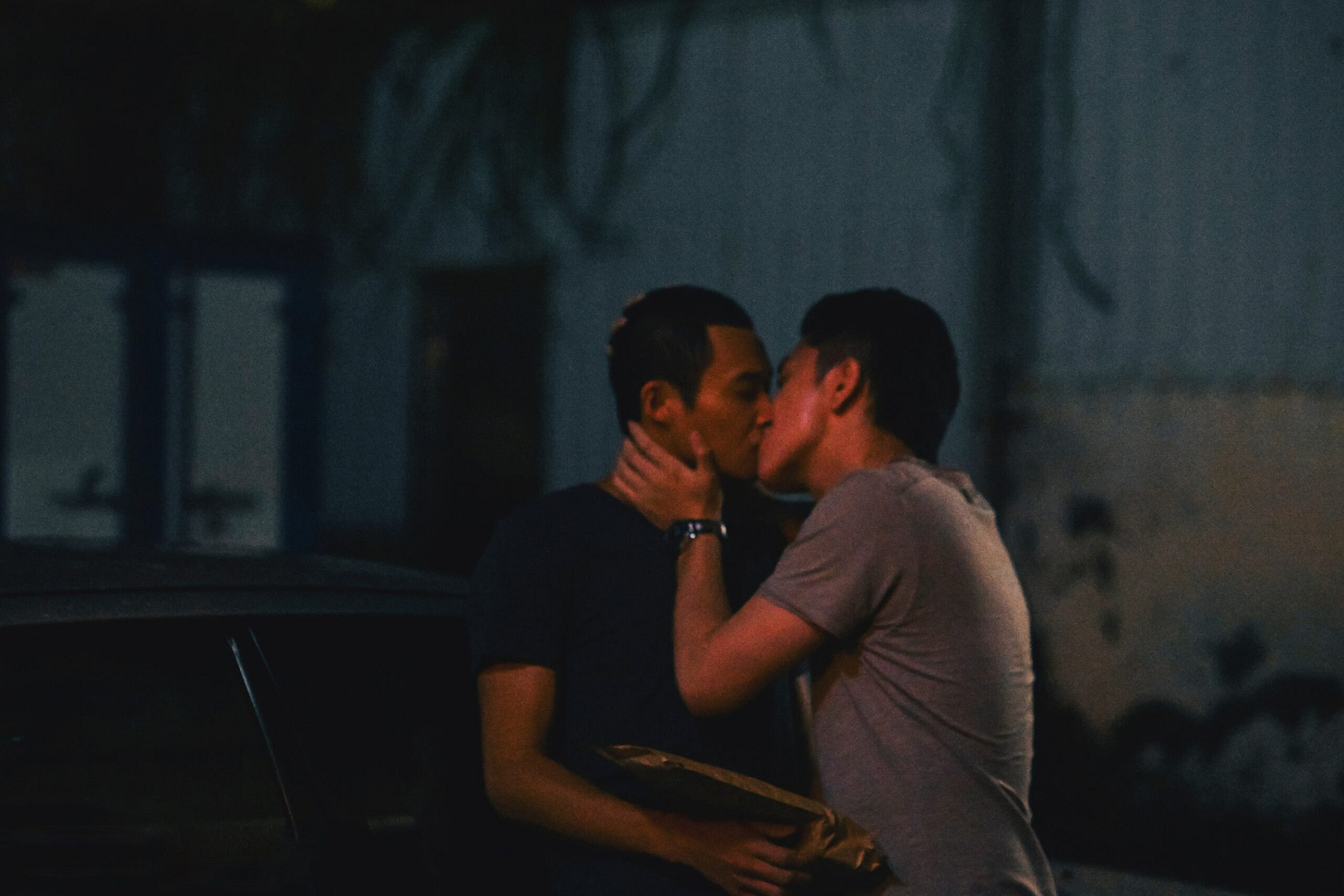
Raising a child with your found family ✦
Though not explicitly queer, Mi-Mi Lee’s Unmarried Mothers/未婚媽媽 (1980) is a drama about a young unmarried woman, Hsiao-Peng, who gets pregnant. Her boyfriend abdicates responsibility; her parents, in an attempt to protect her future, send Hsiao-Peng to a home where young women can give birth in private. The dialogue in the film is very touching: the women speak about their mental health struggles, feeling rejected by their families and partners, and the difficult decision ahead of them: should they give their children up for adoption, or keep them? And if they choose the latter, what future can a single mother have in 1980s Taiwan?
Love after death ✦
Lastly, I watched the Vietnamese director Nguyễn Lê Hoàng Phúc’s Bury Us in a Lone Desert (2025) at the ICA. This is a funny and tender buddy comedy: a young man breaks into a house and is knocked unconscious by the elderly man who lives there. When he awakens, the elderly man makes a proposal: He wants to die and be buried with his long-deceased wife. Or, more specifically, a papier-mâché effigy of his long-deceased wife. Think Kiarostami’s The Taste of Cherry, but much less serious and slow-cinema-y.
I wrote about Kiarostami’s The Taste of Cherry, along with other films & novels, in—
I finally understand what film curators do ✦
In early May, I also went to see an incredible programme of short films, curated by Abirami Logendran and Morgan Quaintance. Logendren and Quaintance are both artists/filmmakers themselves, and so the films they chose—and the way they sequenced them, with recordings of James Baldwin reading from Giovanni’s Room in between—made me feel like the whole evening was an artistic work itself.
I especially loved the first film, Xiaolu Wang’s Good Friday/受难日 (2025), which included scenes of aikido, ice skating, and dragon dancing—along with audio of friends having phone calls about the feeling of falling (both literally and metaphorically). It felt both complete as a work and appealingly accessible in production level—the kind of thing that makes you want to make a short film yourself. Wang’s film just felt so expressive! And so coherent as a relatively low-budget, 9-minute film!

This evening was a new nodal point for me. I haven’t seen that many films, and especially short films by emerging filmmakers. Your Ecstatic Self showed me how much could be accomplished in the medium!
Articles
I’ll close off with a collection of articles I read in June—about novel-writing, freelance journalism, Chinese book clubs, and more.
On spreadsheets. The novelist Klara Feenstra wrote for the NYT’s Letter of Recommendation column on the administrative work of writing fiction:
I had been writing since I was a child, mostly to turn away from the actual world and into one of my own making. I kept up this escapist pretense well into my early 20s, which is when I decided to turn my pastime into an actual book…Suddenly there were all these tasks to be completed, so many that I had to start a spreadsheet to keep track: Research newspaper clippings from 1980s Kraków; learn some Polish to understand the search terms; transcribe chapters from notebook to computer; write a date-stamped timeline for each character; print and line-edit 200 pages; ad infinitum…I didn’t so much “flex my creative muscles” as slog through an unpaid internship to myself.
Ben Lotan and Tara Shi, whose nonprofit This Will Take Time helps facilitate long-term artistic projects, used spreadsheets as well. As Lota noted, “The spreadsheet is actually a super flexible tool. It’s like an infinite notepad where you can link cells to subsequent sheets and zoom in and out infinitely.” And Shi, speaking about the sheer disorganization and exuberance of their spreadsheets, said:
There’s something about using the tool kind of wrong that’s kind of fun.4
Spreadsheets have useful psychological functions, too: the novelist and organizer Sarah Thankam Mathews used a spreadsheet to sustain her commitment to writing:
When I was feeling really low, I used to look at this spreadsheet I made that was straight up just a list of the artists I admired and what they were doing at the age I was at the time. Almost always it was something like waiting tables, shooting up, taking care of someone’s mother. It was so comparatively rare for them to have had sexy ascended careers in their 20s, and that was really comforting to me because I felt bombarded by a certain kind of prodigy narrative.
On snooker. I don’t like games. I rarely like watching them; I never like playing them. (My favorite way to “play” tennis is by practicing my strokes against a backboard, while having an hourlong phone call with a friend.) But Sally Rooney’s essay on Ronnie O’Sullivan, “the greatest snooker player in history,” made me pine after having a game—any game!—to love as much as Sally Rooney loves snooker. Or, more specifically, any player to love as much as Sally Rooney loves O’Sullivan:
Bad snooker would be painful to watch; mediocre snooker is notoriously boring; but great snooker is sublime. And it is generally agreed that even among those legends of the game who have astonished and delighted the viewing public, one player stands alone.
As the essay continues, Rooney reflects on the talent, intelligence (both human and artificial) and genius required to be great. O’Sullivan, she writes,
has delivered more captivating performances, more technical perfection, and more sheer formal beauty than most artists ever manage. I want to write books the way he plays snooker. I know I never will. But even just wanting to is enough.
On writing for magazines. The freelance journalist and critic (and programmer!) Sheon Han did an excellent Q&A with Erika Hayasaki about how he fell in love with longform journalism; writing about the film Minari for the New Yorker and the open-access research archive arXiv for Wired; and what it was like working at Twitter under Elon Musk. (One particular detail I loved: how helpful it is to have a historian with “an unerring sense for what works and what doesn't” as his first reader and editor.)
On journalism during a climate crisis. I should also mention how much I admire Erika Hayasaki as a journalist and educator! Last year, she wrote an excellent newsletter post about doing freelance reporting on the 2024 Maui wildfires. She sent 20 pitches out, and ultimately published 7 articles that are full of rigor, sensitivity, and ethical urgency. It’s a quick and insightful read:
On computers and the transformation of our world. “The first time I saw a computer,” Knausgaard writes, “was in 1984.” Back then,
The computer was not charged with anything, neither meaning nor the future; it was just a box in a basement den in a house in a river landscape at the edge of the world on a black and wet autumn evening in 1984. Forty years on, the technology in the gray box is everywhere, shaping my life in every way, which is strange in itself, but perhaps stranger is the fact that I have never cared about it, just taken it for granted and seamlessly incorporated it into my life…It feels as if the whole world has been transformed into images of the world and has thus been drawn into the human realm, which now encompasses everything. There is no place, no thing, no person or phenomenon that I cannot obtain as image or information.
On love and other unrealizable projects. Henry Begler’s recent newsletter on Norman Rush’s Mating beautifully narrates Begler’s experience with the novel, and the defiantly grand vision for love it contains:
The dream of a romance of equals does face innumerable obstacles…particularly when the woman is an unsparing intellect who won’t stand for even a small dishonesty and the man is a charismatic, stubborn revolutionary with a high-grade messiah complex. But it would be wrong to abandon the possibility…[because] at the end of the day, it’s the only miracle that exists. Rationality is great, but it has its limits. There are forces out there more powerful than us. You only get one life to live. Why not risk it all for love?
A Chinese perspective on on American abundance. One of the terrible things about being American is that you really can’t see how ineradicably American you are. Other people in other countries are forced to talk about your politics, with your language, which makes it seem like your parochially American assumptions are simply how the world works.5 Unfortunately, it’s really hard to escape this if you primarily (or exclusively) read English-language content. Which is why it’s so fascinating to read things like afra’s newsletter, “Reading Abundance from China,” which translates some highlights of a Mandarin Chinese book club on Derek Thompson and Ezra Klein’s Abundance.
What to read about Zohran (for non–New Yorkers). I assume that non-Americans feel about Americans the way non–New Yorkers feel about New York. It’s this one place in the world that is parochially obsessed with itself, and that obsession feels both annoying (what about where other people live?) and justified (because it is, after all, a fairly interesting and influential place). The Democratic primary to choose the party’s nominee for the mayoral elections was last week, and Zohran Mamdani—a 33-year old politician who has worked as a housing counselor, field organizer, and then state assembleyman—won over Andrew Cuomo and 8 other candidates.
Here’s J. P. Hill on the “palpable” and “electric” joy of Zohran Mamdani’s primary win: “So many politicians are in it for themselves. We see that, and we see the effects…But those of us who have followed [Zohran] for years trust his integrity because we’ve seen him behave not as an individual but as part of a movement.”
Here’s Sarah Thankam Mathews, writing the day before the results were announced: “Enough pessimism of the intellect, it is time for my new best friend: optimism of the will.”
Here’s Ross Barkan about running for the New York State Senate in 2018 (Mamdani was his campaign manager, and Barkan writes that “Zohran was deeply schooled…But Zohran was more practical than other leftists and very aware of political realities”) and what Zohran’s primary win means in 2025:
Authenticity is the watchword, and Mamdani has much of it…In terms of brute politics, he made all the right moves, stressing economics and dodging the culture war. He met voters where they were, and his canvassers, forty thousand in number, met them on the doors. He had a message and stuck to it. The more than four hundred thousand Democrats who voted for Mamdani voted, in fact, for Mamdani, and not merely against Cuomo. It was an affirmative choice, a thrilling leap into the unknown.
And finally, for Curbed, Christopher Bonanos wrote about Zohran Mamdani’s campaign identity, which was designed by Aneesh Bhoopathy of the two-person co-op Forge and inspired by bodega awnings, Bollywood posters, and NYC vernacular lettering.
Thank you for reading this newsletter! I’ll return to your inbox in a week or two. One final, closing thought:
Help me help you (write a newsletter and feel connected to something bigger)
From March through May of this year, the Israeli military blockaded all aid from entering the Gaza Strip. Since May, aid has been distributed by an organization called the Gaza Humanitarian Foundation (GHF), which bypasses other international aid groups and coordinates directly with the Israeli military. The United Nations has described the GHF as a “failure” that is “weaponizing aid.” Since May 26, 583 people have been killed while trying to seek aid. In early June, a humanitarian worker for the Norwegian Refugee Council said that she was afraid to tell Gazans to visit aid sites in case they would die. And today, a joint statement issued by 170 charities and NGOs has said that the GHF is violating humanitarian norms:
Palestinians in Gaza face an impossible choice: starve or risk being shot while trying desperately to reach food to feed their families.6
There is very little that I can do and that feels devastating. But I think there is both an ethical and existential obligation, for every person, to figure out what they think would make the world a better place—and try to do it. Here’s my small gesture:
If you write a newsletter on Substack—or would like to start one!—I’ll do a 30-minute call with you to share my tips on writing great posts, growing an audience, and cultivating a community of readers. In return, please donate $50 or more to Connecting Humanity. The organization, which provides eSIMs to families, journalists, doctors and aid workers in Gaza, received a 2024 EFF award for their work.7
My qualifications: I started this newsletter a year and a half ago with no preexisting audience and no social media presence. Since then, I’ve written 42 posts, gained 20k subscribers, and been featured by Substack 3 times.

As a preview, you can also read my free! newsletter about my 1-year anniversary on Substack and how I got to 8k subscribers—
Interested? Fill out this form (which asks for your email address, what topics you want to write about, what advice would be most helpful, other newsletters you admire) or click the button below:
I was deeply entertained by this statistic, in Teddy (T.M.) Brown’s article in the New York Times, about the arms race to create a better lactose intolerance pill:
People who struggle to digest dairy products make up 65 to 70 percent of the global population, according to the National Institute of Diabetes and Digestive and Kidney Diseases. More than one-third of Americans are estimated to be lactose intolerant, with susceptibility often dictated by genetic makeup; Native Americans, African Americans and an estimated 90 percent of Asian Americans cannot digest lactose properly.
(I’m part of the 90%.)
I should also mention the essential and tremendously valuable contributions of my editor, Maya Chung! And Valerie Trapp, who fact-checked the piece. Before writing this, I’d heard that fact-checking was essential to turning vague, non-specific writing into something more crisp, vivid, and well-argued…but I didn’t know exactly how it worked. Now I know! Being deliberate about dates and nouns and the causal implications of particular verbs—these are small details that make sentences more sturdy and overall arguments more persuasive.
An aside: For the past few months, there’s been a robust debate on Substack Notes about whether writing on Substack is better (no gatekeepers!) or worse than traditional media (no editors and fact-checkers!). I find the whole debate fascinating and mystifying, because the media environment in 2025 is unquestionably a both/and thing instead of an either/or thing. I write both and like writing in both.
My personal experience is that traditional media is better for:
Learning how to construct a coherent and compelling argument (this starts with the pitch email! or the initial discussion with an editor!) and carry it all the way through a piece. My article is much stronger thanks to Maya’s comments.
Learning how to isolate editing into specific rounds (such as structural edits, then line edits, then fact-checking)
Self-publishing and Substack are better for:
Learning how to draw attention to your writing (you’re responsible for writing your own headlines and deks)
Faster feedback loops between you and whatever audience you’ve cultivated (you can write something, publish it the next day, and see if it resonates!)
This is obviously not an exhaustive list, and I’d love to hear from others about the pros and cons!
This quote also illustrates how Nicolette Polek, despite writing in a style that could be described as whimsical or eclectic, never slips into being obnoxiously twee! She has punchy writing. There are clear and unambiguous nouns (“duck eggs”) and numbers (“$250 worth”). In between her more dreamlike, evocative descriptions,—like this:
Many of our conversations were like this, gridlocked at paradoxes—how greatness is in weakness and the last are first, how in little there is enough, and how all these contradictions were contained in the life of someone who descended into and out of death in order to raise us all. It didn’t matter if she was or wasn’t right. A veil covered my heart, which opened to another veil, and another veil.
—she’ll fire off a short, vivid sentence just to keep you on your toes. A little after the quote above, for example, we get:
Marta made me spaghetti for lunch. I curtsied before she sat down. She didn’t notice. I was mortified.
In the interview, Lotan and Shi suggest that “in the business world,” spreadsheets are used in a more “classic, organized” way, instead of their approach: “Things are copied and pasted, and some sheets just have giant chunks of text in them”
My only point of disagreement here is that, in the business world, spreadsheets are also an unmanageable, disorderly mess—anyone who has performed “data” “analysis” understands this deeply!
When I first lived in London from 2019 to early 2023, it was deeply humbling to learn about things like the partition of India and Pakistan (and the immense suffering and political problems it created) for the first time, essentially. I’d assumed I was reasonably politically au fait; it turned out I knew nothing.
As the EFF noted, internet access is “a crucial avenue for free speech and the free press.” And it’s especially helpful in a crisis:
People in crisis zones rely upon the free flow of information to survive, and restoring internet access in places where other communications infrastructure has been destroyed helps with dissemination of life-saving information and distribution of humanitarian aid, ensures that everyone’s stories can be heard, and enables continued educational and cultural contact.



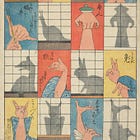


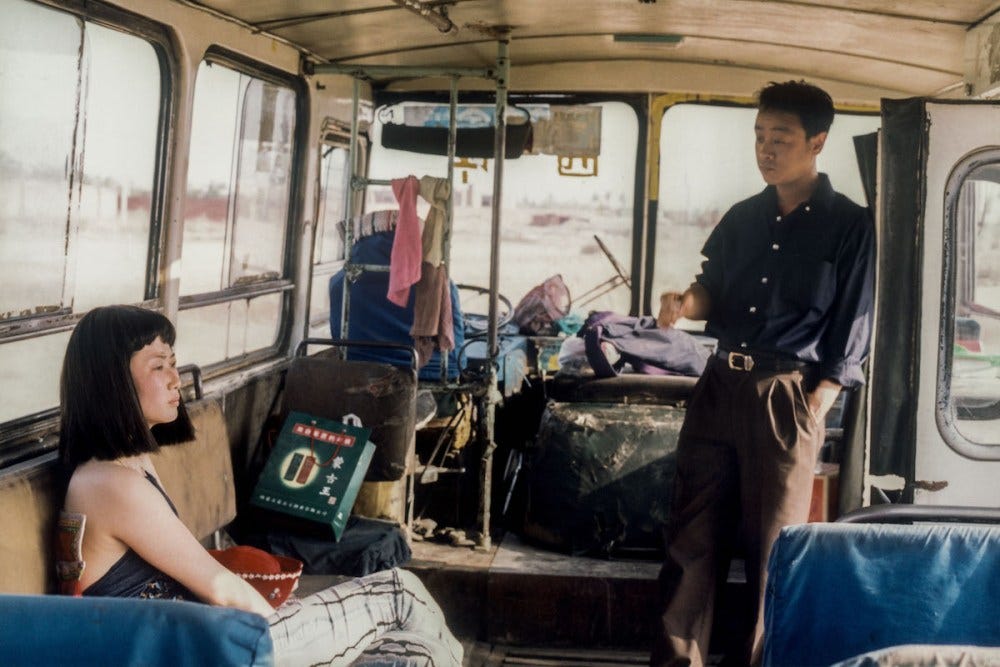

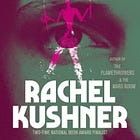

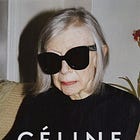
I am so happy whenever someone reads and loves Anita Brookner. I loved your observation about how she writes as though she were a 19thC social novelist, but in a more intimate setting. For me, Latecomers a favourite! May I also humbly recommend Look at Me, A Start in Life, and Brief Lives. I find her novels in used bookshops and parcel them out a season at a time so that I continue have a new one to look forward to.
I really want to read Bitter Water Opera now, that sounds just like my cup of tea!
I 100% agree with the spreadsheets love. I don't know why they aren't more popular (well, i do, it's because by default they look awful). With a tiny bit of care not only are they incredibly useful and versatile, they can also be super cute!